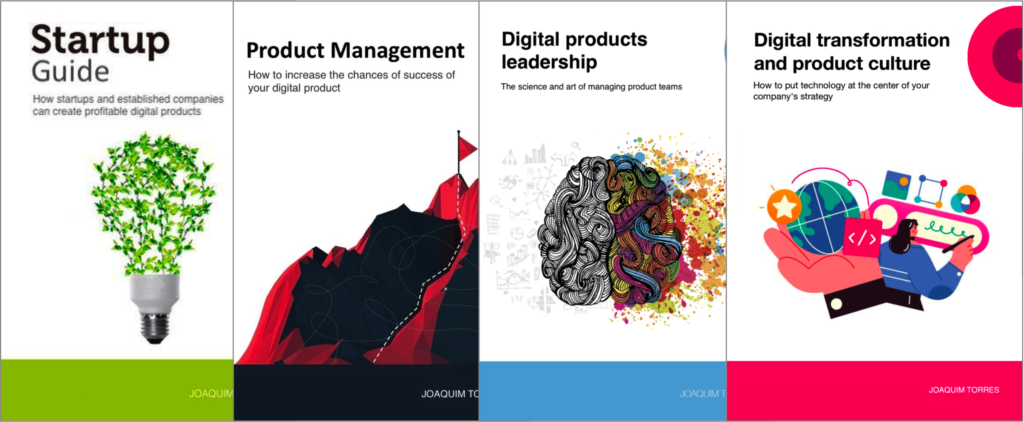
A Practical Guide to AI for Product Managers
11 de March, 2025
Structuring effective product development teams
25 de March, 2025If you’re developing a product, you’ve probably realized that without a clear vision, every decision feels like a shot in the dark. After all, if we don’t know where we want to go, any path will do. Today, I want to talk about the importance of product vision—but in a very specific moment: before Product-Market Fit (PMF).
Before we dive into the role of product vision in the pre-PMF stage, it’s worth revisiting some essential fundamentals. Here are some articles that explore key aspects of this concept:
- What is Product Vision?
- Product Vision examples
- Vision as a Tool for Stakeholder Alignment and Collaboration
- The Head of Product Doesn’t Create the Product Vision
- Who Creates the Product Vision as the Company Grows?
- Product Strategy, defining the Path to Build the Product Vision
- Product Management and Development Playbook
In the last article, I explained that product vision shouldn’t change constantly, but it’s important to review it annually or when a significant event (external or internal) occurs, such as an economic crisis, an acquisition, or your company acquiring another.
Product Vision Before PMF
Product vision shouldn’t always change—just like in a journey, we shouldn’t constantly change our destination. Product visions are meant to last for years. The more established your product and company become, the less frequently you need to modify your product vision.
On the other hand, when developing a pre-PMF product, meaning before achieving product-market fit, you’ll likely need to review and adjust your product vision more frequently. As we learn from the product and how people respond to it, their feedback helps us refine and evolve the vision.
In 2024, I had the opportunity to serve as interim CPTO at footbao, a startup with the mission of democratizing football talent. In its original vision, the idea was to create a niche social network, connecting talents with content creators and football fans. Once this connection was established, we planned to bring in brands for advertising and clubs to access these talents. Over the year, we learned much about the market dynamics and refined our product vision. By the end of the year, the focus had shifted to connecting talents directly with club opportunities. As of early 2025, this remains the focus and vision, but further evolution will certainly occur until they achieve PMF.
Another example was when we identified the opportunity to create Gympass Wellness. Our initial vision was to build a marketplace for wellness apps with a separate subscription from Gympass, which at the time provided access only to gyms. Within a few months, that vision changed, and we decided to integrate the apps into Gympass’ core offering. Eventually, the company rebranded as Wellhub.
One crucial point is that PMF is not a binary “yes” or “no” state. Instead, PMF represents “the degree to which a product satisfies a strong market demand.” This degree of satisfaction can vary—your product may partially satisfy the market, fully meet expectations, or fail to meet them. When building products for multiple audiences, you must satisfy all key stakeholders. In footbao’s case, this means delivering value to both football talents and clubs.
The need to revise the product vision decreases as we progress toward PMF. That’s why companies with more established products, like Gympass, Conta Azul, and Lopes, don’t frequently change their product vision. However, they may expand their vision by launching new products. For example, Gympass introduced Gympass Wellness, a wellness app marketplace complementary to its gym network. Similarly, Lopes launched Credipronto to offer real estate financing for home buyers. These new products also underwent an evolution in their visions as they learned from their early versions.
If your product hasn’t yet found PMF, frequent adjustments to your vision are inevitable. But this doesn’t mean you lack direction—it’s a natural learning process. Every adjustment should be driven by real market insights, not just assumptions. As product-market fit strengthens, the vision stabilizes and becomes the foundation for strategic decisions.
The key to success lies in balancing adaptation and persistence—knowing when to stay the course and when to pivot. Are you gathering the right customer signals to strengthen your product vision?
Workshops, coaching, and advisory services
I’ve been helping companies and their leaders (CPOs, heads of product, CTOs, CEOs, tech founders, and heads of digital transformation) bridge the gap between business and technology through workshops, coaching, and advisory services on product management and digital transformation.
Digital Product Management Books
Do you work with digital products? Do you want to know more about managing a digital product to increase its chances of success, solve its user’s problems, and achieve the company objectives? Check out my Digital Product Management books, where I share what I learned during my 30+ years of experience in creating and managing digital products:
- Digital transformation and product culture: How to put technology at the center of your company’s strategy
- Leading Product Development: The art and science of managing product teams
- Product Management: How to increase the chances of success of your digital product
- Startup Guide: How startups and established companies can create profitable digital products


